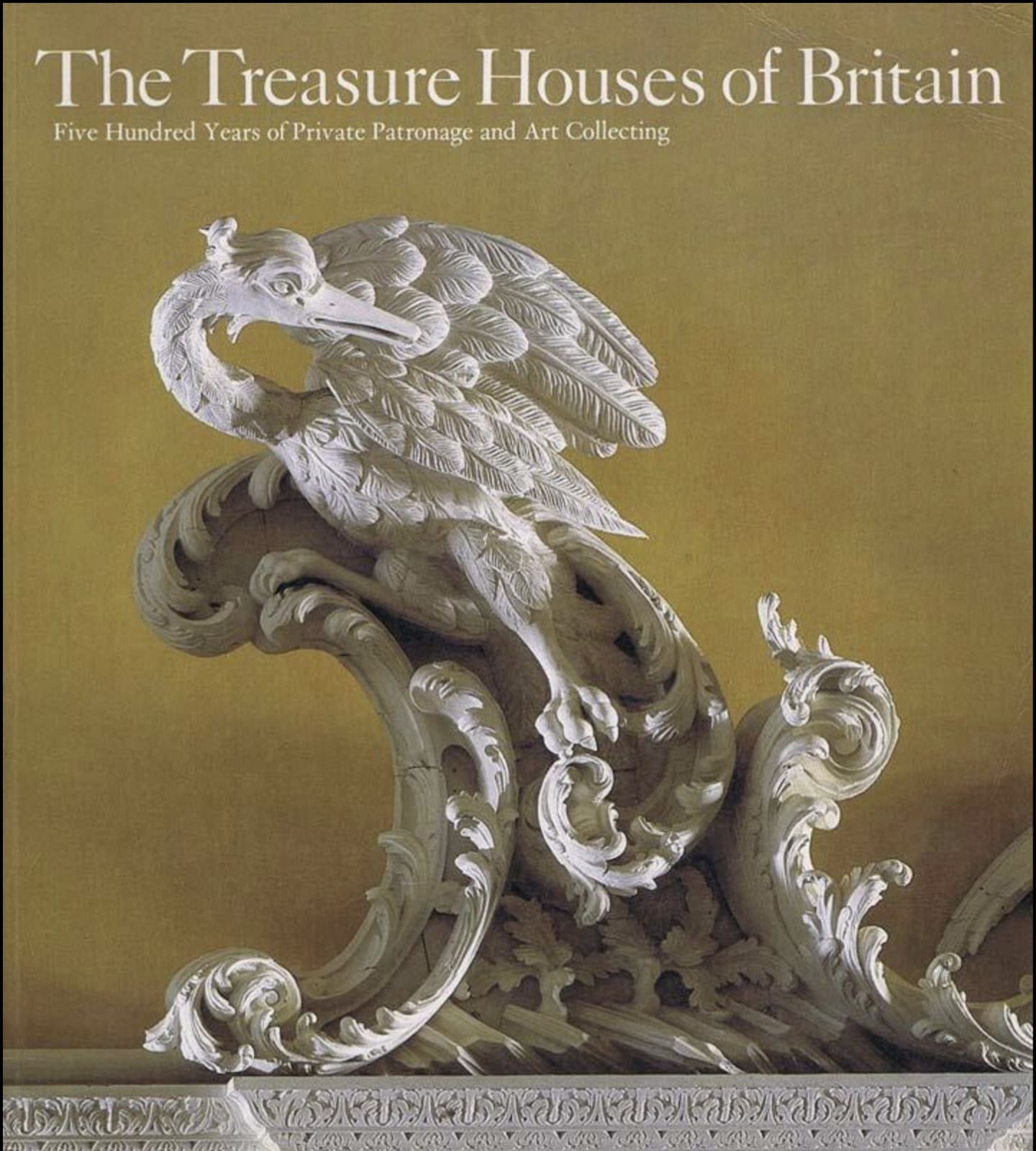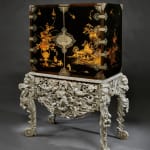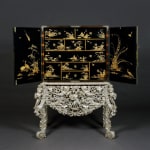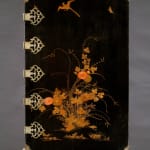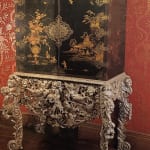Notable Sales
THE ATHELHAMPTON HOUSE CABIBET-ON-STAND
Width : 122cm 48"
Height : 168cm 66"
Further images
Provenance
Athelhampton
Sir Robert Cooke
Exhibitions
‘The Treasure Houses of Britain’ in Washington D.C. in 1984
Literature
The Treasure houses of Britain pg.198
An important and exceptional quality late 17th century japanned cabinet on stand. The upper part decorated with flowers and animals and scenery depicting homes on a coastal landscape. Centred by a chased gilt brass lock plate and with mounts and pierced strap hinges to the sides. The doors opening to reveal ten draws similarly decorated. The carved silvered stand, centred by a figure carrying a basket of flowers surrounded by eagles and floral decorations. The shaped legs carved with putti carrying flowers terminating in intricately scrolled feet.
Very few examples of cabinets of this quality have survived with their original stands, but two known comparable examples exist, one in the collection of the Victoria and Albert museum in London, and another in the Holbourne Museum in Bath.
This magnificent cabinet illustrates the joy and exuberance of the ascent to the throne of Mary, the daughter of James II and her husband William of Orange, whose arrival in England from the Netherlands was mostly greeted with jubilation after the previous reign.
The taste for items from the Orient was becoming established in England at this time, due in no small part to the formation of the East India Company in 1601 with a royal charter from Elizabeth I, making it one of the oldest of the East Indian trading companies.
The courts and nobility of Europe had long been fascinated by the exoticism and mystery of the Orient, and this growth in trade only stimulated intrest and demand further; of particular popularity was interest in ‘chinoiserie’. This intrest manifested itself through spectacular cabinets like this one and lacquer screens.
There was one notable publication that was prodcued at the time, 'A Treatise of Japanning and Varnishing' by John Stalker & George Parker. It describes in detail the process of Japanning. Such was the level of detail, this publication remains a key reference book for the technique today.




